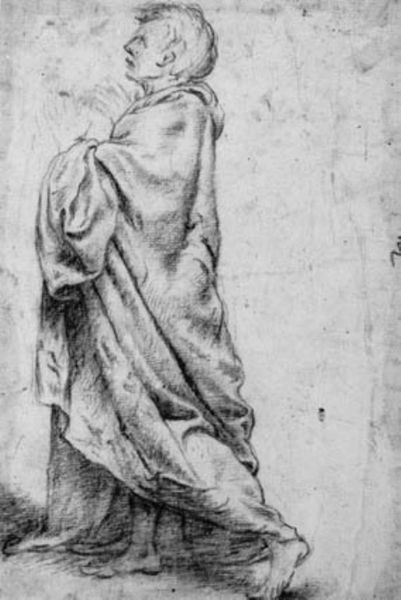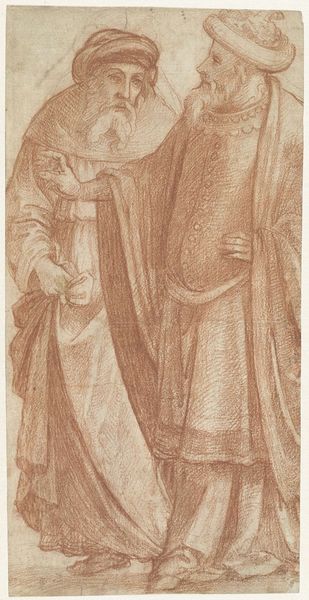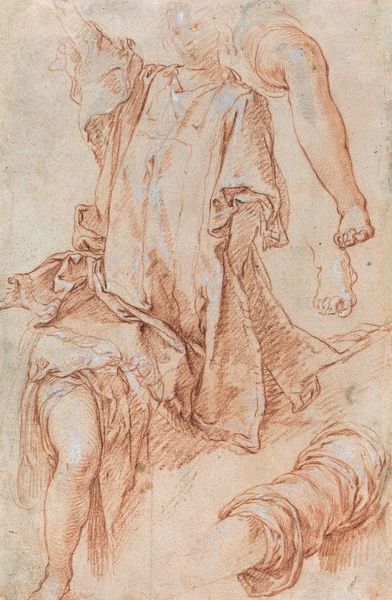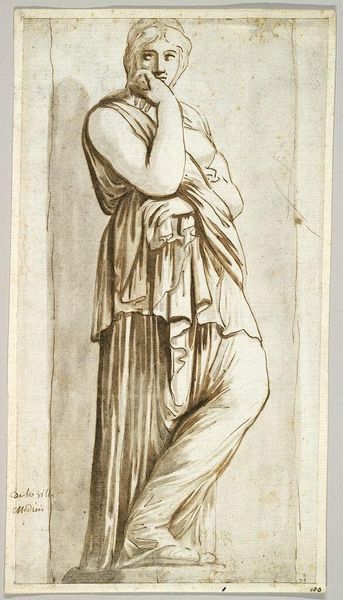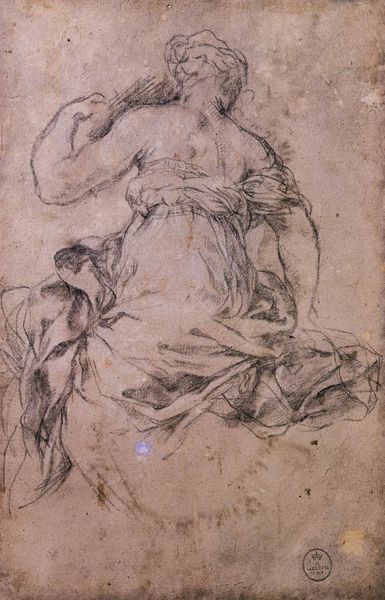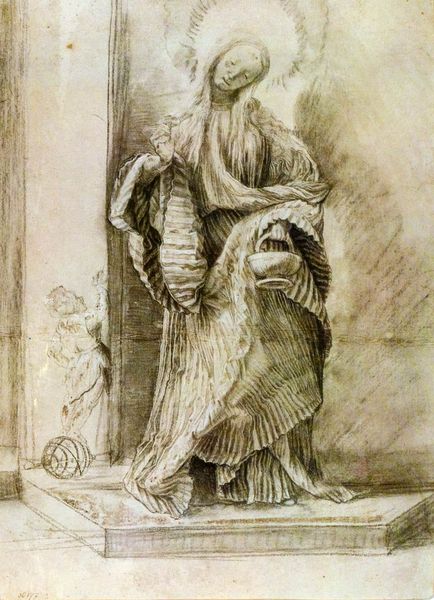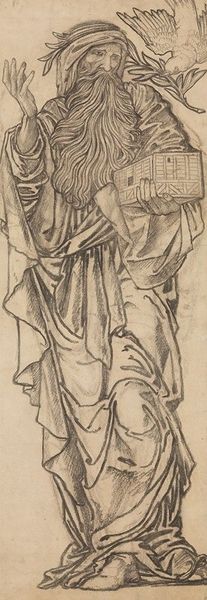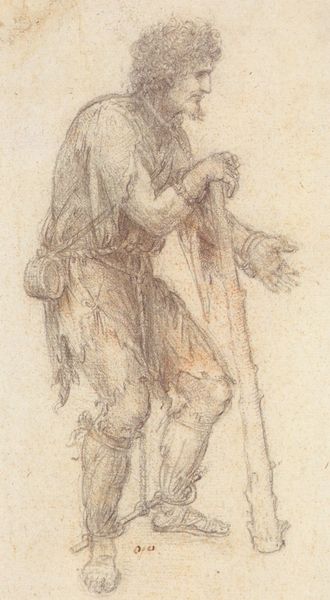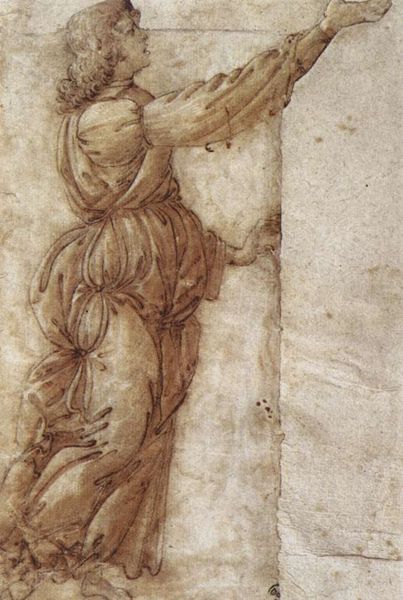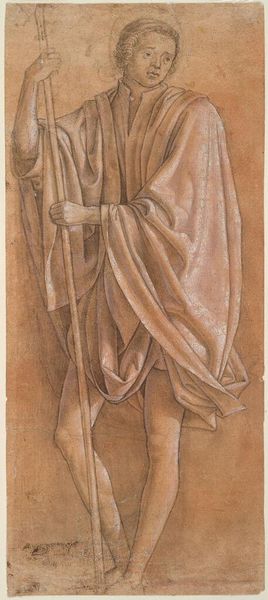
drawing, charcoal
#
portrait
#
drawing
#
charcoal drawing
#
figuration
#
11_renaissance
#
line
#
charcoal
#
italian-renaissance
Dimensions: 260 x 170 cm
Copyright: Public domain
Editor: Okay, first impressions: this charcoal drawing looks like a flurry of motion caught on paper, like a dance but paused mid-twirl. It feels intimate, almost like overhearing a conversation you're not meant to. Curator: Precisely. What you’re observing is a glimpse into the world of late 15th century Florence, Italy, via Domenico Ghirlandaio’s “Study of Two Women.” This drawing, created circa 1486 and held at the Uffizi Gallery, provides us insight into not only the sartorial codes of the time but also, potentially, the positioning of women within artistic workshops. Editor: It's funny you mention "workshop," because that's totally the vibe I'm getting. They don't look particularly thrilled. One has her hands clasped, looking like she might be in trouble, and the other has her back to us, maybe trying to ignore what’s happening. The detail in the fabric, though – wow. Curator: The very meticulous use of line becomes the method through which we glean an understanding of their social standing and emotional state. Notice, for example, how Ghirlandaio uses heavier lines to define the folds in their garments, providing them weight and presence but possibly emphasizing constraint, lack of agency. In the Renaissance, the rendering of fabric was deeply intertwined with the expression of status. Editor: Interesting. It’s like the clothes are doing the talking. So, beyond the clothes, what does a study like this tell us about Ghirlandaio’s world, and especially about his gaze towards these women? Were they just models, or were they active participants in the artistic process, too? Curator: It's compelling to consider both possibilities, isn’t it? On one hand, they could have been models, possibly lower class or working-class women who sat for the master; on the other, this study hints at something more layered when viewed through the framework of women artists present, but largely undocumented, at the time in Renaissance workshops. Maybe one, or both, were involved in his studio? Their posture— particularly the one facing us—implies introspection, or an intellectual pursuit; a demeanor at odds with passive posing. The context complicates the gaze. Editor: Right, because the question becomes: is Ghirlandaio showing us who these women are, or who he thinks they should be? Even now, those are really relevant questions in any creative work. Well, whatever their story was, this quick charcoal dance on paper keeps it alive. Curator: Indeed, the drawing itself becomes a site of ongoing interpretation and conversation, bridging historical artistic practice to contemporary intersectional narratives of representation and identity.
Comments
No comments
Be the first to comment and join the conversation on the ultimate creative platform.

